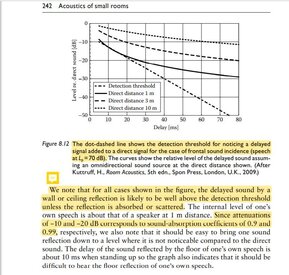AJ Soundfield
Active Member
More
- Preamp, Processor or Receiver
- Yamaha RXA800, Denon AVR-X4500, Lexicon MC10
- Main Amp
- Hypex Ncores
- Additional Amp
- Abacus Ampino, Triode Corp TRV-35SE
- DAC
- NAD M51
- Computer Audio
- AudioEngine D2
- Universal / Blu-ray / CD Player
- Yamaha BDA1010
- Front Speakers
- Soundfields
- Center Channel Speaker
- Soundfields, KEF Q150
- Surround Speakers
- Soundfields
- Surround Back Speakers
- Revel M16
- Subwoofers
- Soundfield Cardioid Rythmik Servo
- Other Speakers
- AVA ABX
"What were the results of the double blind listening tests for the two single spatial pressure points measurements above, using human binaural hearing? Which did 2 ears/no eyes-beliefs prefer?
In anticipation I had pointed out the differences between the 2 "sides" to these discussions previously."
What gibberish. Those graphs are for multiple measurement points averaged. I cannot imagine that anyone competent in reading those graphs would suggest that some psycho surveys are needed to tell which one is technically superior.
Listening tests are neither "gibberish" nor "psycho surveys". They are the ultimate arbiter for sound. regardless of baseless beliefs about "technical superiority" of single pressure points uncorrelated to binaural hearing. That's the whole reason Toole got involved, if you've ever read his work and the countless others he cites. Listening/what people hear is actually the most, not least important.
Ditto Miro's graphs and his question. i.e. The Topic here.
Like Sonnie, it's pretty clear to me Miro is trying to find optimal sound but is confused as how to do so, quite common on forums. He may actually believe the measurement(s) is a substitute, rather than a compliment to actual listening.I am trying to find the best soundstage. I have a problem with finding the best listening position..
All my advice, links, etc. are related to him getting better sound. My advice to you would be to read the links I provided Miro as well, since they are relevant to the discussion.
Give Miro an alternative view based on over a hundred years of sound science. Ultimately, he should trust neither your or my "authority", but instead trust what his ears tell him is best for him. Maybe it is your studiophile near wall "technical" based approach, or maybe he'll opt for what "Pyscho surveys" have found, including those of many studiophiles, as linked.What exactly are you trying to do here?
We'll see.
No hurt feeling either way, it's his ears he has to satisfy.
cheers













